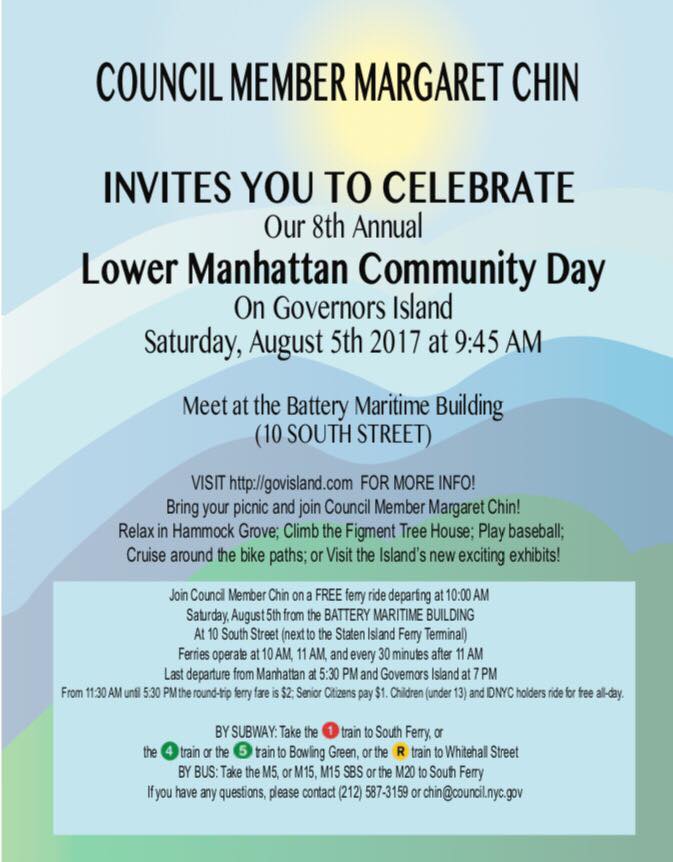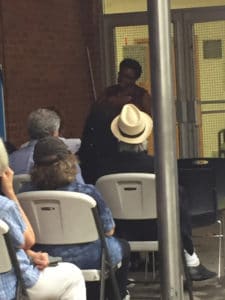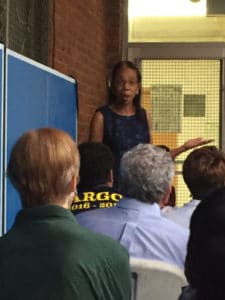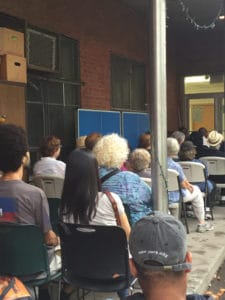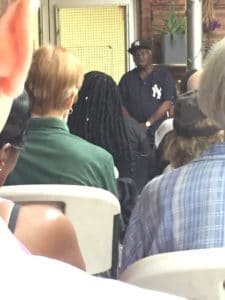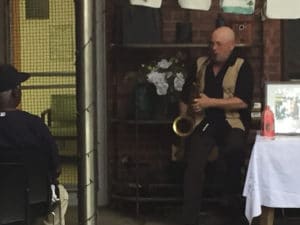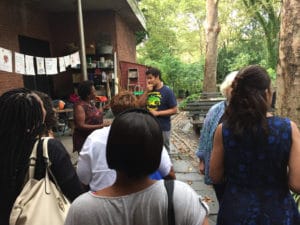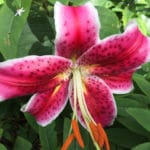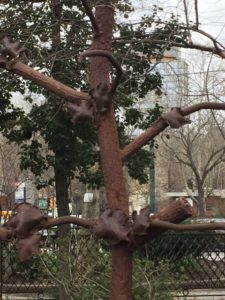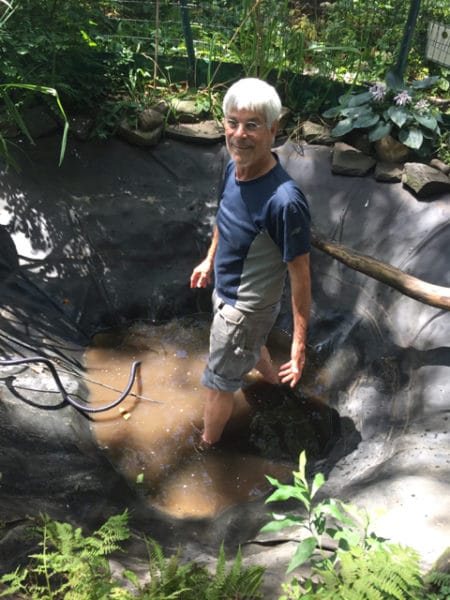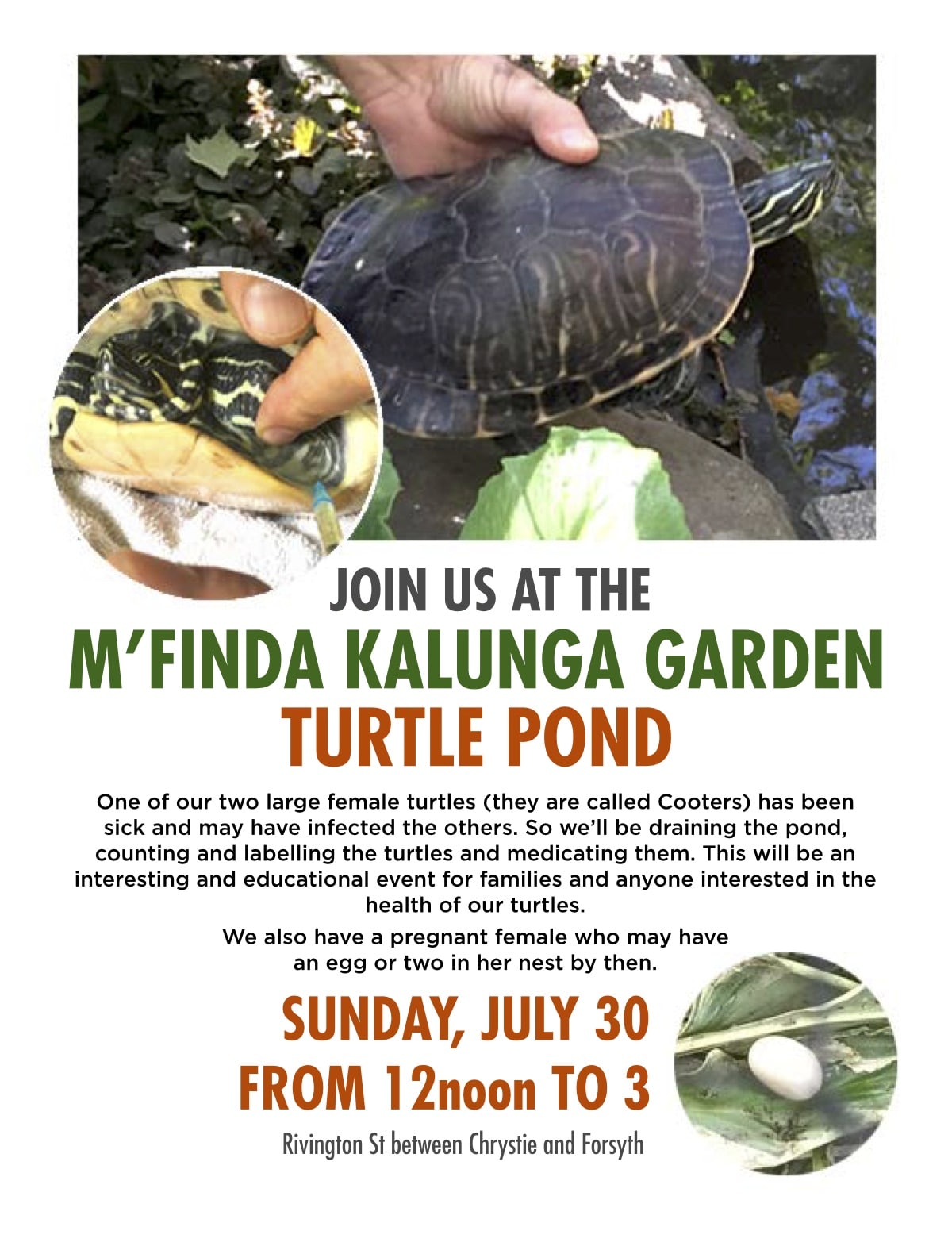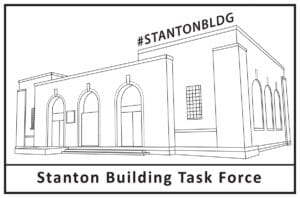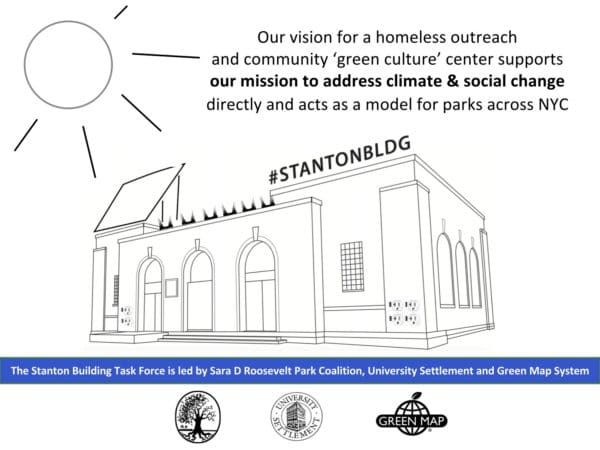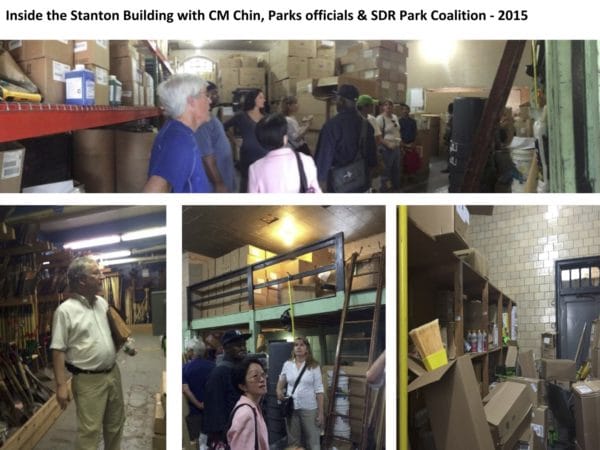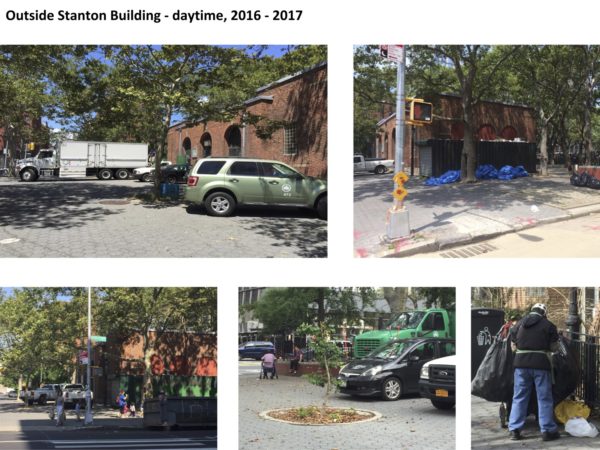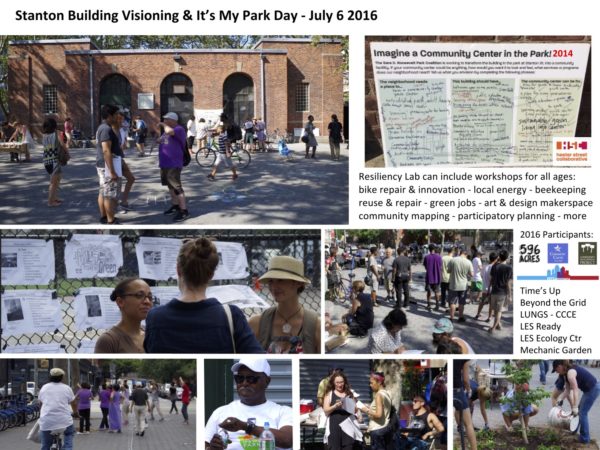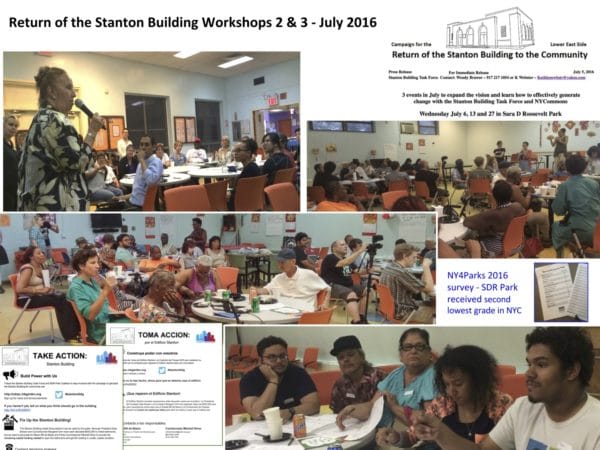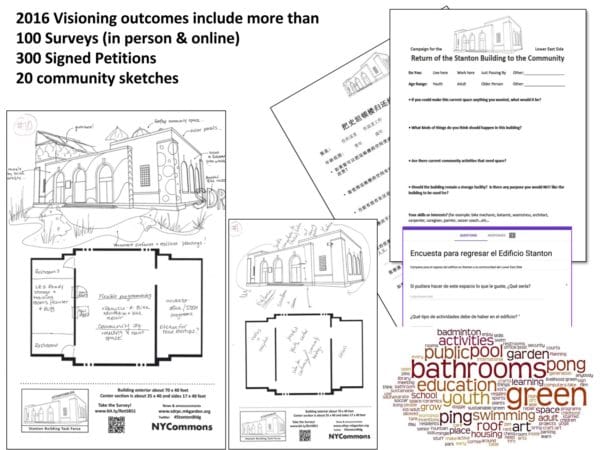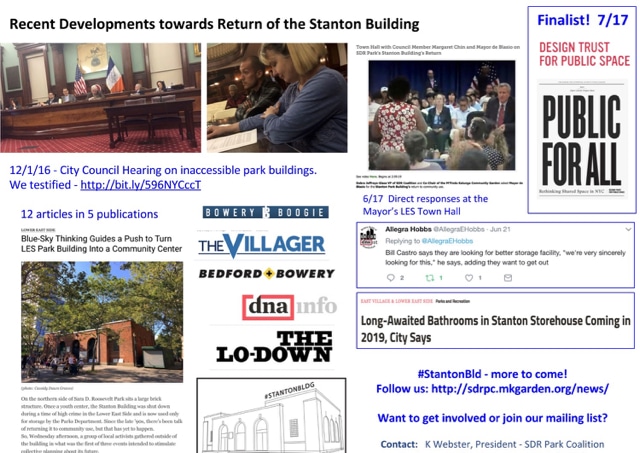Call 311 To Get Help For the Homeless. Call 911 To Get Help in An Emergency.
Reminders from CB3 Office:
Please always call 311 for homeless issues and ask for homeless outreach. (this triggers Goddard Homeless Outreach who should arrive within an hour. They will begin Case Management if one isn’t already started for an individual.
Once you get your complaint number from the 311 operator, let the CB 3 Office know. They will track it and keep records and liaise with the pertinent Agency or Organization.
| Community Board 3, Manhattan 59 East 4th Street New York, NY 10003 |
Phone: 212-533-5300 E-Mail: info@cb3manhattan.org |
For crises or issues where someone is endangered or a danger to self, please call 911 immediately.
Memorial for Ronald Michael Humber – Despite the Rain
Heartfelt Condolences to the family. Many thanks to all who came. Beautiful words, music and song.
“It’s Been a Pleasure”
For more photos see M’Finda Kalunga Garden!
A History of NYC Parks
City Lab: When gentrification Meant Driving Hogs Out of Manhattan:
“Irish pig farmers…German gardeners, .. the African-American settlement of Seneca Village, worked and lived on the land that’s known today as Central Park. Most of their homes were destroyed in the 1860s to create the park.”
Catherine McNeur: Taming Manhattan: Environmental Battles in the Antebellum City.
…Its parks and public spaces were, in large part, funded by fees that the wealthy paid in the hope of creating a place where bourgeois ladies could stroll unbothered by those of lower status.
…Central Park…“the lungs of the city”…creation was fraught with class and racial fallout. The homes of many poor immigrants who survived by processing trash, as well as the thriving African-American settlement of Seneca Village, were seized through eminent domain and destroyed to create a manufactured pastoral landscape…
Many of the underlying conflicts in McNeur’s riveting, meticulously researched account resonate strongly in the New York of today, where deepening economic inequality is fraying the ideal of a prosperous city that can be shared by all its residents: where the churning real estate market is constantly displacing the less wealthy; where rich neighborhoods get pristine parks and poor ones get cracked asphalt…
“[T]he increasingly tamed city privileged one group’s vision for the city and its environment, while amplifying environmental and economic disparity” …”
Photos are available on The Museum of the City of New York‘s online collection
NYTimes: GreenThumb Gardens Grew in NYC
Two GreenThumb Gardens have existed in Sara Roosevelt Park. Both were begun in the early 1980’s when this area was full of burned out buildings, drug dealers and pimps lining Forsyth Street. Garden creation was key in building and anchoring communities and pushing back threats or harm to neighbors. The people did it while creating beautiful oases of flowers, birds, trees, fish, frogs, turtles, chickens and community.
We are currently reminding GreenThumb of one of those early contributors to the safety and beauty of this neighborhood officially established in 1994 as The Forsyth Garden Conservancy now the New Forsyth Garden Conservancy as well as the Hua Mei Bird Sanctuary Bird Owners. Garden’s Rising website.
From NYTimes:
“Food From Around the World, Homegrown in New York”
“Sometimes when you arrive in a new place, you don’t have a network you can tap into for support,” Mr. LoSasso said. “By joining a community garden, you’re joining a network of neighbors who are coming from diverse backgrounds who can help new members of their community to get settled.”
Approach to Ending Homelessness: from Community Solutions
In our never ending quest to find new ideas to tackle issues we’ll post different solutions and suggestions. We can’t leave things as they are. It isn’t working for anyone. – SDR Coalition
From Community Solutions:
Homelessness:
Too often, communities view homelessness as an intractable problem or one that is prohibitively expensive to resolve. In reality, we know what it takes to end homelessness, and research has demonstrated that it costs less to do so than to leave people on the streets, where they cycle through expensive, publicly funded emergency services.
Community Solutions has successfully helped hundreds of communities to address homelessness throughout the United States and internationally, through efforts like our groundbreaking 100,000 Homes Campaign, which helped participants move more than 105,000 homeless Americans into permanent housing in under four years.
Mission
We work to end homelessness and the conditions that create it. We do it by helping communities become better problem solvers, so they can fix the expensive, badly designed systems that our most vulnerable neighbors rely on every day.
Our approach:
The Best Tools from Multiple Sectors
We work to end homelessness and ensure poverty never follows families beyond a single generation.
We think the way to achieve those goals is to help communities become better, more adaptive problem solvers so they can tackle complex challenges as they emerge. As teams learn to work differently and rethink their existing resources, they find that they can help far more people escape homelessness and poverty than they once knew.
How We Work
Our problem solving process is rooted in five key principles:
 Focus on the outliers – those people or neighborhoods most likely to fall through the cracks of existing social welfare programs- to build better solutions for everyone
Focus on the outliers – those people or neighborhoods most likely to fall through the cracks of existing social welfare programs- to build better solutions for everyone
 Set measurable, public, timebound goals to build a sense of urgency and force key players to innovate
Set measurable, public, timebound goals to build a sense of urgency and force key players to innovate

Engage the user – those trapped in poverty, along with frontline health and human services workers- to design more practical, better informed solutions
 Optimize existing resources by using all available data to inform decisions about spending and community responses to need
Optimize existing resources by using all available data to inform decisions about spending and community responses to need

Test and evaluate new ideas in short cycles to learn what works quickly and build on successful strategies
- Go to the previous page
- 1
- …
- 107
- 108
- 109
- 110
- 111
- 112
- 113
- …
- 163
- Go to the next page

